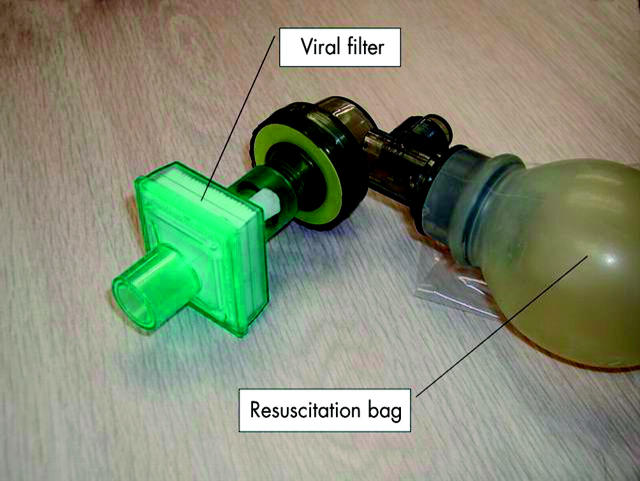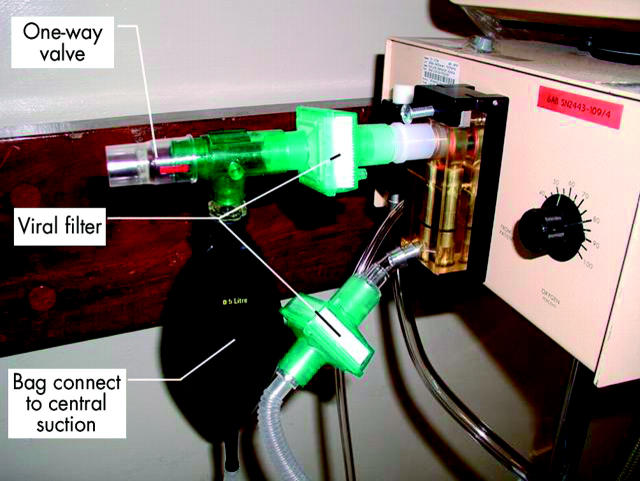Abstract
The Severe Acute Respiratory Syndrome (SARS) is a newly discovered infectious disease caused by a novel coronavirus, which can readily spread in the healthcare setting. A recent community outbreak in Hong Kong infected a significant number of pregnant women who subsequently required emergency caesarean section for deteriorating maternal condition and respiratory failure. As no neonatal clinician has any experience in looking after these high risk infants, stringent infection control measures for prevention of cross infection between patients and staff are important to safeguard the wellbeing of the work force and to avoid nosocomial spread of SARS within the neonatal unit. This article describes the infection control and patient triage policy of the neonatal unit at the Prince of Wales Hospital, Hong Kong. We hope this information is useful in helping other units to formulate their own infection control plans according to their own unit configuration and clinical needs.
Full Text
The Full Text of this article is available as a PDF (175.5 KB).
Figure 1.

The floor plan of the neonatal unit at the Prince of Wales Hospital. (A) The SARS areas (ward 6A). (B) The "clean" neonatal intensive care areas (ward 6B). (1) The "clean" special care areas (ward 7B). NICU, neonatal intensive care unit; SCBU, special care baby unit.
Figure 2.
A resuscitation bag fitted with a viral filter.
Figure 3.
A conventional neonatal ventilator fitted with viral filters at the exhalation limb and connected to the wall suction outlet.
Selected References
These references are in PubMed. This may not be the complete list of references from this article.
- Drosten Christian, Günther Stephan, Preiser Wolfgang, van der Werf Sylvie, Brodt Hans-Reinhard, Becker Stephan, Rabenau Holger, Panning Marcus, Kolesnikova Larissa, Fouchier Ron A. M. Identification of a novel coronavirus in patients with severe acute respiratory syndrome. N Engl J Med. 2003 Apr 10;348(20):1967–1976. doi: 10.1056/NEJMoa030747. [DOI] [PubMed] [Google Scholar]
- Ho William, Hong Kong Hospital Authority Working Group on SARS, Central Committee of Infection Control Guideline on management of severe acute respiratory syndrome (SARS). Lancet. 2003 Apr 19;361(9366):1313–1315. doi: 10.1016/S0140-6736(03)13085-1. [DOI] [PMC free article] [PubMed] [Google Scholar]
- Hon K. L. E., Leung C. W., Cheng W. T. F., Chan P. K. S., Chu W. C. W., Kwan Y. W., Li A. M., Fong N. C., Ng P. C., Chiu M. C. Clinical presentations and outcome of severe acute respiratory syndrome in children. Lancet. 2003 May 17;361(9370):1701–1703. doi: 10.1016/S0140-6736(03)13364-8. [DOI] [PMC free article] [PubMed] [Google Scholar]
- Ksiazek Thomas G., Erdman Dean, Goldsmith Cynthia S., Zaki Sherif R., Peret Teresa, Emery Shannon, Tong Suxiang, Urbani Carlo, Comer James A., Lim Wilina. A novel coronavirus associated with severe acute respiratory syndrome. N Engl J Med. 2003 Apr 10;348(20):1953–1966. doi: 10.1056/NEJMoa030781. [DOI] [PubMed] [Google Scholar]
- Lee Nelson, Hui David, Wu Alan, Chan Paul, Cameron Peter, Joynt Gavin M., Ahuja Anil, Yung Man Yee, Leung C. B., To K. F. A major outbreak of severe acute respiratory syndrome in Hong Kong. N Engl J Med. 2003 Apr 7;348(20):1986–1994. doi: 10.1056/NEJMoa030685. [DOI] [PubMed] [Google Scholar]
- Li Thomas Sing Tao, Buckley Thomas A., Yap Florence H. Y., Sung Joseph J. Y., Joynt Gavin M. Severe acute respiratory syndrome (SARS): infection control. Lancet. 2003 Apr 19;361(9366):1386–1386. doi: 10.1016/S0140-6736(03)13052-8. [DOI] [PMC free article] [PubMed] [Google Scholar]
- Peiris J. S. M., Lai S. T., Poon L. L. M., Guan Y., Yam L. Y. C., Lim W., Nicholls J., Yee W. K. S., Yan W. W., Cheung M. T. Coronavirus as a possible cause of severe acute respiratory syndrome. Lancet. 2003 Apr 19;361(9366):1319–1325. doi: 10.1016/S0140-6736(03)13077-2. [DOI] [PMC free article] [PubMed] [Google Scholar]




